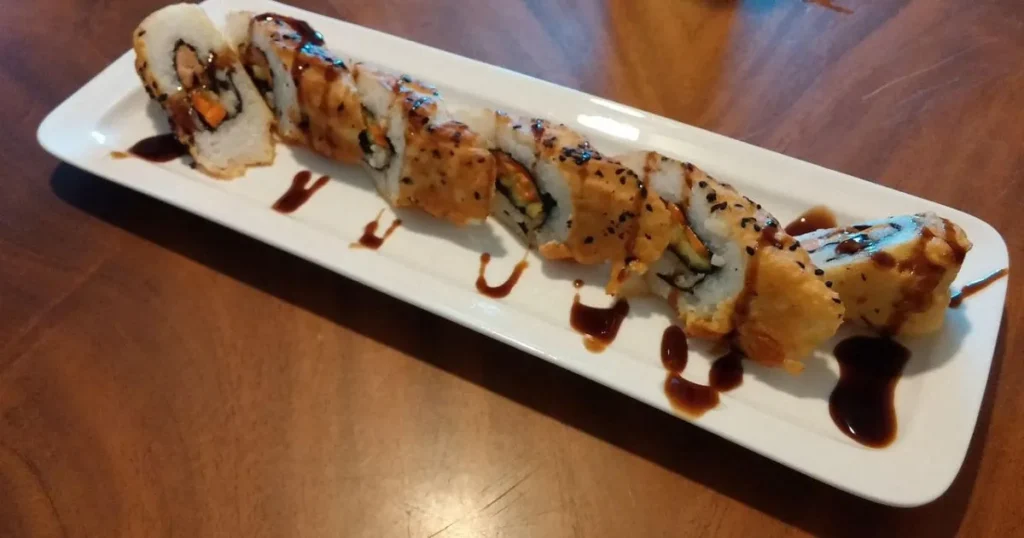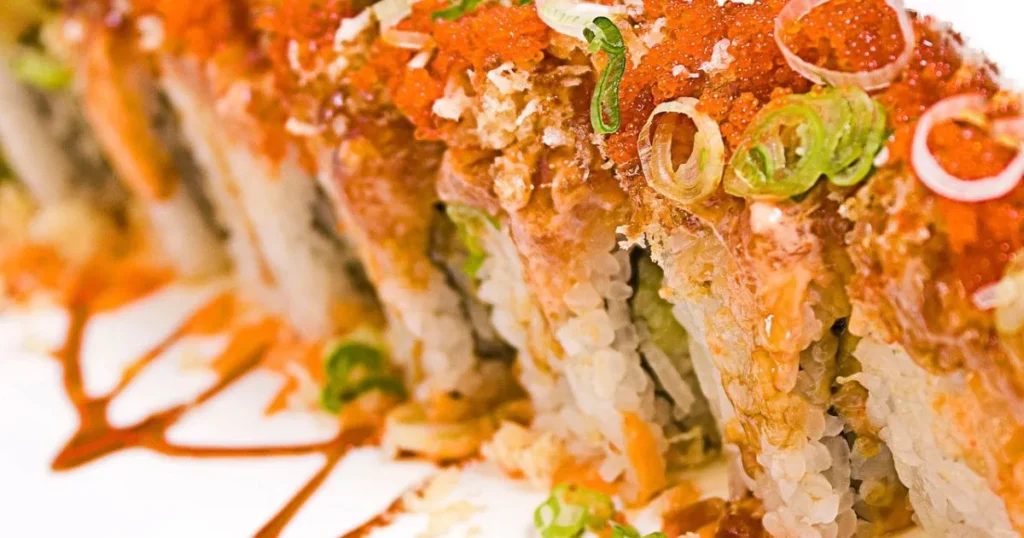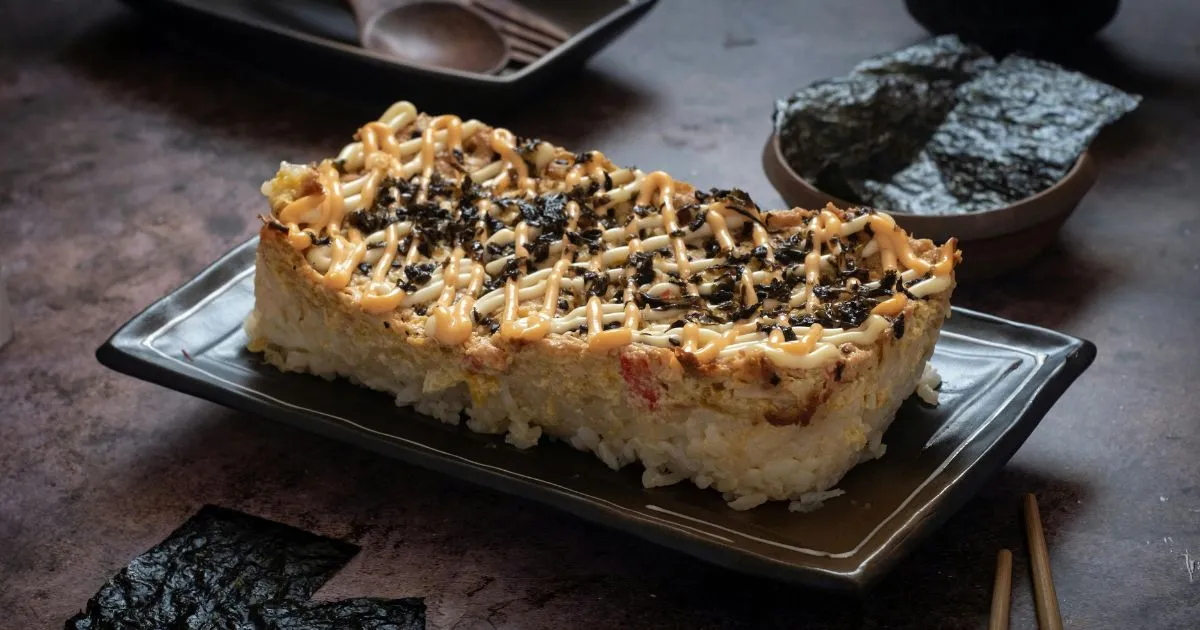Table of contents
- Introduction: Discovering the Sushi Bake Revolution
- The Evolution of Sushi: From Rolls to Bakes
- Selecting the Best Ingredients for Your Sushi Bake Recipe
- Essential Kitchen Tools and Preparation Steps
- Step-by-Step Guide to Crafting Your Sushi Bake Recipe
- Detailed Ingredients Table for Your Sushi Bake Recipe
- Customization Ideas to Make Your Sushi Bake Recipe Truly Your Own
- Nutritional Insights and Health Benefits
- Expert Tips and Troubleshooting for a Perfect Sushi Bake
- Presentation and Serving Suggestions
- Conclusion: Your Journey to Sushi Bake Success
- Frequently Asked Questions About Your Sushi Bake Recipe
- Final Call-to-Action
Welcome to your comprehensive guide to creating the ultimate sushi bake recipe that transforms traditional sushi into an easy, layered casserole that everyone will love. In this article, you’ll discover everything—from ingredient selection to step-by-step instructions, customization ideas, and expert troubleshooting tips. This guide is crafted in a friendly, conversational tone and is packed with detailed information to help you create a stunning sushi bake dish in your own kitchen.
Introduction: Discovering the Sushi Bake Revolution
What Is a Sushi Bake Recipe?
The sushi bake recipe is a creative take on classic sushi, where ingredients are layered in a baking dish instead of being rolled by hand. This innovative method makes it simple to enjoy the vibrant flavors of sushi without the fuss of traditional rolling. With its combination of perfectly seasoned rice, fresh proteins, crisp vegetables, and a tantalizing sauce, the sushi bake becomes a go-to dish for casual dinners, parties, and family gatherings.
Why Try a Sushi Bake?
If you’ve ever wanted to enjoy sushi at home without the precision and pressure of traditional sushi-making, this dish is for you. The advantages include:
- Ease of Preparation: Skip the need for a bamboo mat and intricate rolling techniques.
- Versatility: Customize with your favorite seafood, tofu, or vegetables.
- Shareability: Serve it as a hearty casserole that invites communal dining.
- Flavor Explosion: Enjoy a layered blend of textures and tastes that harmonize beautifully.
Embracing the sushi bake recipe means welcoming a stress-free way to enjoy one of your favorite meals with a modern twist.
The Evolution of Sushi: From Rolls to Bakes
A Brief History of Sushi
Sushi has a rich heritage rooted in centuries of Japanese culinary tradition. Originally, sushi began as a method of preserving fish with fermented rice. Over time, it evolved into a delicacy known worldwide, with various regional adaptations and techniques emerging.
How the Sushi Bake Came to Life
The concept of a sushi bake recipe emerged as a practical solution for home cooks and modern chefs alike. Instead of meticulously rolling each piece, the ingredients are layered in a dish and baked to create a casserole that still delivers the authentic flavors of sushi. This method has captured the imagination of food enthusiasts who crave convenience without sacrificing taste.
Modern Appeal and Global Influence
Today, the sushi bake is celebrated not only for its ease but also for its adaptability. Whether you prefer seafood, tofu, or a medley of fresh vegetables, you can tailor the recipe to suit your preferences. The dish has quickly become a favorite on food blogs and social media, inspiring countless variations and creative twists.
Selecting the Best Ingredients for Your Sushi Bake Recipe
The Importance of Quality Ingredients
When preparing a sushi bake recipe, every ingredient plays a pivotal role in the final taste and texture. Fresh, high-quality components ensure that each bite bursts with flavor and authenticity.
Core Components You’ll Need
- Sushi Rice: The foundation of the dish, short-grain sushi rice should be cooked to perfection—sticky enough to hold together but light enough to let the other flavors shine.
- Rice Vinegar Mixture: A blend of rice vinegar, sugar, and salt that gives the rice its signature tang.
- Proteins: Options include sushi-grade fish, imitation crab, shrimp, or tofu for a vegetarian version.
- Vegetables: Diced cucumber, avocado, and finely chopped scallions add freshness and crunch.
- Sauce: A spicy, creamy mixture of mayonnaise and sriracha that ties the dish together.
- Garnishes: Sesame seeds and shredded nori (seaweed) provide texture and a nod to traditional sushi flavors.
Tips for Sourcing Your Ingredients
- Freshness Counts: Look for the freshest seafood available or choose high-quality imitation crab if fresh options aren’t accessible.
- Organic Options: Whenever possible, opt for organic vegetables and locally sourced produce.
- Customization: Experiment with different proteins and vegetables to create your own unique version of the sushi bake recipe.
Essential Kitchen Tools and Preparation Steps
Must-Have Equipment for a Smooth Cooking Experience
Before diving into your sushi bake recipe, ensure you have the following tools:
- Baking Dish: A medium-to-large dish that allows for even layering.
- Rice Cooker or Heavy Pot: For preparing perfectly steamed sushi rice.
- Sharp Knife and Cutting Board: For dicing vegetables and proteins with precision.
- Mixing Bowls: To prepare your seasoning, sauce, and ingredient mixes.
- Spatula: An essential tool for gently folding and serving the dish.
Setting Up Your Workspace
- Clear and Clean: Organize your countertop and gather all your ingredients.
- Pre-Measure: Measure out your rice, seasonings, and sauce ingredients before you begin. This step helps streamline your cooking process.
- Stay Focused: Reading through the recipe entirely before you start can help ensure you don’t miss any critical steps in your sushi bake recipe.

Step-by-Step Guide to Crafting Your Sushi Bake Recipe
Step 1: Perfecting the Sushi Rice
Rinse and Cook
Begin by thoroughly rinsing 2 cups of short-grain sushi rice under cold water until the water runs clear. This process removes excess starch, ensuring your rice remains light and fluffy. Next, combine the rinsed rice with 2 ¼ cups of water in a rice cooker or a heavy pot. Allow the rice to steam until it becomes tender yet retains a slight bite.
Seasoning the Rice
While the rice is still warm, prepare a seasoning mix using:
- 1/4 cup rice vinegar
- 2 tablespoons sugar
- 1 teaspoon salt
Gently fold this mixture into the rice with a wooden spatula. Use a slicing motion to keep the grains intact and avoid mashing them. Let the rice cool to room temperature before proceeding.
Step 2: Prepping Your Proteins and Vegetables
Protein Preparation
Depending on your preference, choose one or a combination of the following:
- Sushi-Grade Fish or Imitation Crab: If using fish, ensure it’s sliced into bite-sized pieces. For imitation crab, shred or chop it into similar-sized pieces.
- Tofu (Vegetarian Option): For a plant-based twist, press and cube firm tofu. Lightly pan-fry the tofu until golden on all sides for added flavor and texture.
- Other Seafood Options: Shrimp or a medley of seafood can be used—simply peel, devein, and chop them into manageable portions.
Vegetable Preparation
- Cucumber: Dice one medium cucumber into small, uniform pieces.
- Avocado: Carefully cube two ripe avocados, ensuring they are firm enough to hold their shape.
- Scallions: Finely chop three scallions to add a mild, aromatic note to the dish.
Step 3: Creating the Signature Sauce
The sauce is what brings your sushi bake recipe together with a spicy, creamy finish.
Mixing the Sauce
In a small bowl, blend:
- 1/2 cup mayonnaise (use full-fat for a richer texture)
- 2-3 tablespoons sriracha (adjust based on your spice preference)
Mix thoroughly until the sauce is smooth. This sauce not only adds heat but also helps bind the layers of your dish.
Step 4: Assembling Your Sushi Bake Layers
Now comes the fun part—layering all your components to create a visually appealing and delicious dish.
- Base Layer: Evenly spread the seasoned sushi rice across the bottom of your baking dish.
- Protein Layer: Distribute your chosen protein (fish, imitation crab, tofu, or seafood mix) over the rice.
- Vegetable Layer: Scatter the diced cucumber, avocado, and chopped scallions evenly on top.
- Drizzle the Sauce: Generously drizzle the prepared mayo-sriracha sauce over the layered ingredients.
- Garnish: For an extra touch of flavor and authenticity, sprinkle sesame seeds and chopped nori (seaweed) on top.
Step 5: Optional Baking for a Warm Finish
For those who prefer a warm, slightly crisp finish:
- Preheat your oven to 375°F (190°C).
- Place the assembled dish in the oven for 10-15 minutes. This step helps meld the flavors together and adds a subtle textural contrast to the dish.
Detailed Ingredients Table for Your Sushi Bake Recipe
For clarity, refer to this detailed table outlining all the ingredients you’ll need:
| Ingredient | Quantity | Details/Preparation |
|---|---|---|
| Short-grain sushi rice | 2 cups (uncooked) | Rinse until water is clear |
| Water | 2 ¼ cups | For steaming the rice |
| Rice vinegar | 1/4 cup | Mix with sugar and salt for seasoning |
| Sugar | 2 tablespoons | Adjust sweetness to taste |
| Salt | 1 teaspoon | Enhances the rice flavor |
| Sushi-grade fish or imitation crab | 1 pound | Chop or shred into bite-sized pieces |
| Tofu (optional) | 1 block, firm | Press and cube if using |
| Cucumber | 1 medium, diced | Peel if preferred |
| Avocado | 2, cubed | Choose ripe but firm avocados |
| Scallions | 3, finely chopped | For added aroma and color |
| Mayonnaise | 1/2 cup | Full-fat recommended for creaminess |
| Sriracha | 2-3 tablespoons | Adjust for desired spice level |
| Sesame seeds | 1 tablespoon | For garnish |
| Nori (seaweed sheets) | 2-3 sheets, chopped | Enhances traditional sushi flavor |

Customization Ideas to Make Your Sushi Bake Recipe Truly Your Own
Exploring Flavor Variations
One of the greatest strengths of the sushi bake recipe is its versatility. Here are some creative ideas to experiment with:
- Extra Heat: Increase the sriracha in your sauce or mix in a dash of chili paste.
- Cream Boost: Stir in a spoonful of cream cheese for an even richer sauce.
- Herb Infusion: Add fresh basil or cilantro to the vegetable mix for a unique flavor twist.
- Fusion Twist: Drizzle a little teriyaki or citrus-soy sauce over the top for a fusion-style kick.
Vegetarian and Vegan Alternatives
For those who prefer plant-based meals, try these substitutions:
- Tofu or Tempeh: Replace seafood with tofu or tempeh for protein. Lightly marinate before cooking.
- Mushroom Medley: Sauté shiitake or portobello mushrooms to add an earthy, savory element.
- Extra Veggies: Increase the variety of vegetables by adding bell peppers, edamame, or roasted carrots.
Adjusting for Dietary Preferences
If you have specific dietary goals, consider these adjustments:
- Low-Sodium: Use low-sodium soy sauce and adjust salt levels accordingly.
- Gluten-Free: Verify that all sauces and condiments are gluten-free.
- Keto-Friendly: Modify the recipe by reducing the rice portion and adding more protein and vegetables.
Nutritional Insights and Health Benefits
Balanced and Nourishing
Your sushi bake recipe isn’t just about taste—it also provides nutritional benefits:
- Carbohydrates: The sushi rice offers a quick source of energy.
- Proteins: Depending on your choice, seafood, tofu, or other proteins support muscle repair and overall wellness.
- Healthy Fats: Avocado and a dash of sesame oil contribute beneficial fats.
- Vitamins and Minerals: Fresh vegetables provide essential vitamins and antioxidants.
- Fiber: The mix of vegetables boosts your fiber intake for better digestion.
A Rough Nutritional Breakdown (Per Serving, Based on 6 Servings)
- Calories: Approximately 350–400 calories
- Protein: 15–22 grams
- Carbohydrates: 45–50 grams
- Fats: 12–18 grams
These numbers can vary depending on ingredient substitutions, making your sushi bake recipe both flexible and nutritious.
Expert Tips and Troubleshooting for a Perfect Sushi Bake
Common Challenges and How to Overcome Them
Even with a well-planned recipe, you might encounter some challenges. Here are expert tips to ensure success:
- Rice Texture Issues: If your rice turns out too sticky, make sure to rinse it thoroughly before cooking and measure water accurately.
- Flavor Balance: Taste your rice after seasoning. If it feels too sour or salty, adjust with a bit more sugar or vinegar as needed.
- Dry Dish: If the sushi bake seems dry after layering, drizzle a little extra sauce before serving or consider adding a splash of water during the assembly process.
- Uneven Layers: Use a spatula to gently level each layer to guarantee consistent flavor distribution.
Enhancing Flavor and Texture
To achieve a truly standout sushi bake recipe, consider these additional tips:
- Work Quickly: Once the rice is seasoned, begin assembling the dish right away to preserve texture.
- Layer with Care: Each ingredient should be spread evenly, ensuring that every spoonful delivers a balanced mix of flavors.
- Experiment Boldly: Don’t be afraid to tweak seasonings or add a personal touch—after all, your kitchen is your creative space.
Presentation and Serving Suggestions
Making Your Sushi Bake Dish Look Irresistible
Presentation is just as important as flavor. Here are some ideas to elevate your sushi bake recipe:
- Plating: Scoop generous portions onto individual plates. The layered look will delight your guests.
- Garnishing: Top each serving with extra sesame seeds, chopped nori, or even a few slices of fresh avocado.
- Side Dishes: Consider pairing with a crisp seaweed salad or a refreshing cucumber salad to complement the warm, savory flavors.
Perfect Beverage Pairings
A great meal deserves the right drink. Consider these pairings:
- Green Tea: Its subtle, refreshing flavor enhances the sushi experience.
- Light Beer or Sake: These beverages balance the spiciness and richness of the dish.
- Sparkling Water: For a non-alcoholic option that cleanses the palate.
Conclusion: Your Journey to Sushi Bake Success
The sushi bake recipe is more than just a meal—it’s a creative culinary adventure. From the meticulous preparation of perfectly seasoned rice to the art of layering fresh proteins and vegetables, every step is designed to deliver a dish that is both satisfying and visually stunning. By following this guide, you’re not only learning how to create an innovative twist on traditional sushi, but you’re also embracing a flexible recipe that can be tailored to your unique taste.
Frequently Asked Questions About Your Sushi Bake Recipe
1: Can I prepare the sushi bake ahead of time?
Yes! You can assemble the rice and protein layers ahead of time and store the dish in the refrigerator. For the best texture, add the sauce and garnish just before serving.
2: What protein works best in a sushi bake recipe?
Traditional options like sushi-grade fish or imitation crab are popular, but you can also experiment with shrimp, tofu, or a blend of seafood. Your choice should depend on your taste and dietary needs.
3: How do I reheat my sushi bake dish?
Reheat leftovers in a microwave on a low setting or in an oven at 350°F (175°C) for a few minutes. Avoid overheating, as this may affect the texture of the rice and vegetables.
4: Is it necessary to bake the dish, or can I serve it cold?
While baking adds a warm, slightly crispy finish, many enjoy the sushi bake dish served cold. Experiment with both methods to see which you prefer.
5: Can I modify the recipe for a spicier version?
Absolutely! Increase the sriracha in your sauce, add a pinch of chili flakes, or mix in a dash of your favorite hot sauce. Customize it to suit your heat tolerance.
Final Call-to-Action
Now that you have all the tools and tips to create your very own sushi bake recipe, it’s time to get into the kitchen and start cooking. Experiment with different proteins, adjust the seasoning to your liking, and share your masterpiece with friends and family. We’d love to see your creations—post a picture on social media and tag us to join a community of sushi bake enthusiasts. Happy cooking, and enjoy every delicious bite!

